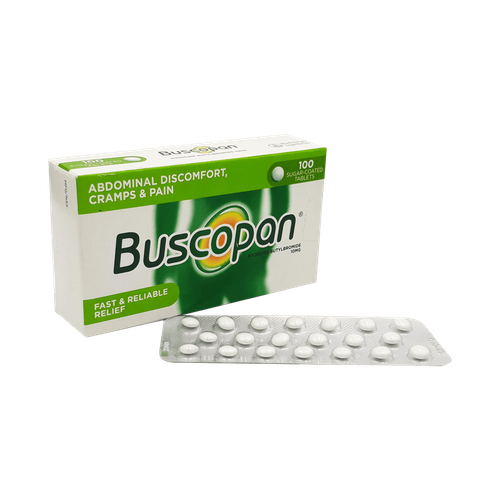This is an automatically translated article.
Cyclobenzaprine belongs to the group of muscle relaxants, made in the form of tablets or capsules, with the main ingredient being cyclobenzaprine hydrochloride. It is used for a short time to treat muscle spasms, often in combination with rest and physical therapy.1. Indications and contraindications of the drug Cyclobenzaprine
Cyclobenzaprine is a skeletal muscle relaxant that acts on regions of the brain stem, helping to relieve skeletal muscle spasms.1.1 Indications What is the use of Cyclobenzaprine? The drug is indicated for: Support for muscle relaxation and physical therapy to relieve muscle spasms associated with acute muscle spasms, musculoskeletal pain. The improvement manifests itself in the reduction of muscle spasms.
Cyclobenzaprine should only be used for a short time (2 - 3 weeks) because there is no evidence of effectiveness with longer-term use. In addition, acute muscle spasms, musculoskeletal pain, and muscle spasms are often short-lived, so long-term therapy is not guaranteed.
Cyclobenzaprine is not effective in treating spasticity involving the brain or spine in children with cerebral palsy.
1.2 Contraindications Do not use Cyclobenzaprine for the following cases:
Hypersensitivity to Cyclobenzaprine or its components; Concomitant or 14-day treatment with an MAO inhibitor; The acute convalescence phase of acute myocardial infarction; Hyperthyroidism ; Arrhythmia, conduction disturbance, heart block, congestive heart failure.
2. How to use and dose of Cyclobenzaprine
Usage: Orally.
Dosage for adults:
Immediate release tablets: 5mg/time x 3 times/day. The dose may be increased to 10mg/time x 3 times/day depending on the patient's response; Extended-release tablets: 15mg/time/day (taken at the same time each day). Some patients may require doses up to 30 mg once daily; Do not use the drug for more than 2-3 weeks. Dosage for children:
Use immediate-release tablets: Adolescents over 15 years old use 5mg/time x 3 times/day. The dose may be increased to 10 mg/time x 3 times/day depending on the patient's response; Do not use the drug for more than 2-3 weeks. Dosage with other subjects:
Hepatic impairment: People with liver failure when using the drug should consider a lower dose than the usual dose (in patients with mild liver impairment), start with 5mg, increase the dose gradually. Cyclobenzaprine is not recommended for patients with moderate or severe hepatic impairment. Do not use extended-release capsules in patients with hepatic impairment; Elderly: When using immediate-release tablets, consider a lower dose than usual, should start with 5mg, increase gradually. The use of extended-release capsules is not recommended for the elderly. Overdose: Symptoms of overdose include: Severe drowsiness, tachycardia, vomiting, tremor, agitation, hallucinations, coma, increased blood pressure, slurred speech, dizziness, confusion,... Patient May have cardiac arrest, chest pain, severe hypotension, arrhythmia, convulsions, ... When overdose, the patient should be monitored heart rate immediately, gastric lavage. If consciousness is impaired, it is necessary to secure the airway before gastric lavage, contraindications to induce vomiting, establish an intravenous line. At the same time, it is necessary to monitor the heart, signs of the central nervous system. Patients with CNS depression require early intubation. Closely monitor the patient, treat symptomatically.
Missed dose: If you forget to take a dose of Cyclobenzaprine, the patient should take it as soon as possible. When it is almost time for your next dose, skip the missed dose and take your next dose at the scheduled time.
3. Cyclobenzaprine side effects
Some side effects that patients may experience when using Cyclobenzaprine include:
Common: Dry mouth, dizziness, fatigue, constipation, indigestion, drowsiness, nausea, irritability, impaired memory, anxiety, abdominal pain, acid reflux, diarrhea,...; Uncommon: Headache, convulsions, tremor, serotonin syndrome, hypertonia, abnormal sensations, paresthesia, ataxia, senility, insomnia, confusion, anxiety, disorientation, depression , agitation, psychosis, hallucinations, excitement, abnormal thinking, anaphylaxis, itchy skin, angioedema, facial edema, urticaria, rash, frequent urination, muscle weakness, fatigue, ...
4. Be careful when using Cyclobenzaprine
When using Cyclobenzaprine, patients should note:
Serotonin syndrome appeared in some patients treated concomitantly with serotonergic drugs. If serotonin syndrome is suspected, cyclobenzaprine and any concomitant serotonergic agents should be discontinued and supportive therapy initiated; Cyclobenzaprine is closely related to tricyclic antidepressants (Amitriptylin and imipramine). Taking slightly higher than recommended doses for skeletal muscle spasms may cause some serious central nervous system reactions; Cyclobenzaprine hydrochloride may potentiate the effects of barbiturates and other CNS depressants; Because of its atropine-like effect, cyclobenzaprine hydrochloride should be used with caution in patients with a history of urinary retention, glaucoma, and taking anticholinergics; In patients with hepatic impairment, plasma concentrations of Cyclobenzaprine are increased. This group of patients is often sensitive to drugs with the potential for sedation, including Cyclobenzaprine; Cyclobenzaprine should be used with caution in elderly patients because of the risk of increased plasma concentrations, increased frequency and severity of adverse events,... Increased CNS side effects, cardiovascular effects, may cause falls or other sequelae, interactions with other drugs or diseases; Because of the risk of injury, the use of cyclobenzaprine with skeletal muscle relaxants should be avoided in geriatric patients. Use the drug only if absolutely necessary, reduce the dose as prescribed by the doctor; Cyclobenzaprine should only be used in pregnant women when absolutely necessary and prescribed by a doctor; Use with caution in nursing mothers, especially if combined with other sedatives; Cyclobenzaprine can cause drowsiness, impaired judgment, so it is necessary to avoid operating machines, driving, performing tasks requiring alertness while taking this medicine.
5. Cyclobenzaprine drug interactions
Some drug interactions of Cyclobenzaprine include:
Aspirin: No significant change in plasma concentration or bioavailability of either drug; Central nervous system depressants (alcohol, sedatives): Will increase the effect of Cyclobenzaprine; MAO Inhibitors: There is a risk of serotonin syndrome when used concomitantly with cyclobenzaprine. Therefore, the combination of these two drugs is contraindicated; Naproxen : May increase risk of drowsiness; Antiserotonergic drugs: May cause serotonin syndrome when used concomitantly with Cyclobenzaprine; Tramadol: Concomitant use with Cyclobenzaprine increases the risk of convulsions; Alcohol: Avoid drinking alcohol while taking Cyclobenzaprine because alcohol can increase side effects such as drowsiness and dizziness. Cyclobenzaprine works by relaxing the muscles, effectively treating muscle spasms. It should not be used for a long time (more than 3 weeks) unless directed by a doctor because long-term use increases the risk of side effects.
Please dial HOTLINE for more information or register for an appointment HERE. Download MyVinmec app to make appointments faster and to manage your bookings easily.













